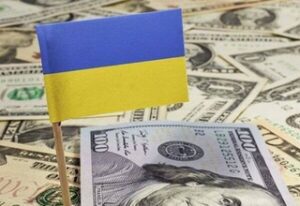
Ukraine is offering holders of GDP warrants issued for a nominal amount of $2 billion 591.219 million to exchange them at a ratio of 1.34 for new amortized Eurobonds of Ukraine B maturing in 2030-2032 and to pay cash compensation of up to 7% for such an exchange, according to a proposal on the Irish Stock Exchange and Cabinet of Ministers Resolution No. 1554 of December 1.
It notes that Ukraine and the special committee of GDP warrant holders made significant progress on the terms of such an exchange in the next round of negotiations from November 25 to 30, but the search for full agreement will continue in the coming days in order to reflect the results of such consultations in the relevant amendments to the Memorandum of Exchange by December 5.
The basic terms provide that 45% of the principal amount of the new Eurobonds B will be redeemed on February 1, 2030, and 2031, while the remaining 10% will be redeemed on February 1, 2032.
The interest rate on these bonds will be 4% per annum from the date of placement until February 1, 2027, then 5.5% until August 1, 2029, and 7.25% per annum for the remaining period until maturity.
Holders of GDP warrants who agree to the exchange during the early acceptance period, up to and including December 12, will receive an additional cash payment of 7% ($70 for every $1,000 of the principal amount of GDP warrants), while those who do so between December 13 and 17 inclusive will receive 4.5%.
Finally, those who do not participate in the exchange, if it is approved, will receive other Eurobonds with a total ratio of 1.36 – Eurobonds B, which were issued during the restructuring of Eurobonds in 2024: at 0.68 – Eurobonds maturing in 2030 and 2034, with an interest rate of zero until February 1, 2027, 3% until August 1, 2033, and 7.75% per annum thereafter.
It is noted that the quorum for making a decision is 75% of the total nominal amount, and the decision is expected on December 22. At the same time, even with the consent of 50% of GDP warrant holders, Ukraine can initiate their delisting from the exchange.
According to the Frankfurt Stock Exchange, GDP warrants rose in price on Monday by 0.66% to 92.15% of their nominal value. The last time they were more expensive was in October 2021, after which their value fell below 20% of their nominal value in certain periods.
As reported, from October 16 to November 5, representatives of Ukraine held a series of limited negotiations with a special committee, which includes institutional holders of GDP warrants, during which the parties twice exchanged proposals for their restructuring without result.
Among the warrant holders are hedge funds Aurelius Capital Management LP and VR Capital Group. They are advised by Cleary Gottlieb Steen & Hamilton LLP and PJT Partners Inc, while the Ukrainian side is advised by White & Case LLP and Rothschild & Co.
Following the autumn round of negotiations, the Ministry of Finance emphasized that Ukraine intends to continue working with warrant holders and consider all available options for their restructuring that are consistent with the three previously stated objectives: restoring debt sustainability in accordance with the IMF program; the commitments made during the restructuring of Eurobonds in August 2024 to distribute the burden appropriately among all commercial claims within the restructuring; the moratorium on warrant payments from May 31, 2025, until the completion of their restructuring, approved by the government on August 27, 2024.
Ukraine’s revised proposal during those autumn negotiations was to compensate for the missed payment on warrants for the 2023 reporting year, which was due on June 2, 2025, and to exchange the warrants for a partial cash payment and a new series of sovereign bonds (“C Bonds”). Under Ukraine’s proposal, holders of GDP warrants who agreed to this restructuring option would receive $60 in cash and C Bonds with a par value of $1,260 for every $1,000 of notional value of the warrants. These bonds would be redeemed in three equal installments on January 30, 2030, 2031, and 2032. Interest on them would be paid semi-annually at rates of 2.50% for 2026-2027, 4% for 2028-2029, and 6.00% for 2030-2032.

In November 2025, the cryptocurrency market experienced one of the most nervous months in the entire post-ETF era. After Bitcoin hit a historic high of around $126,000 in October, November saw a sharp correction: over the last 30 days, BTC has fallen by approximately 20-22% and rolled back more than 30% from its peak, according to data from Coinglass and market reports.
Against this backdrop, most altcoins experienced a real “bubble compression” — many lost more than 50% in a month. But even in such a market, there were assets that either grew or fell significantly less than others.
Below is an overview of who were the conditional “winners” of November and who ended up at the top of the anti-rating. These are not investment recommendations, but an analysis of trends and risks.
The market as a whole: correction after overheating
Bitcoin – a monthly decline of about 20–22%, more than 30% down from its historic high of approximately $126,000.
Ether and large altcoins fell even more sharply, in the range of 25–40% per month.
According to analysts’ estimates, hundreds of billions of dollars in market capitalization evaporated in November after a very aggressive rally in 2024–early 2025.
Triggers for the correction: profit-taking after record highs, forced liquidation of leveraged positions, cooling interest in high-risk altcoins, and weak macro statistics.
Important: when the entire market is falling, “the best” in most cases means either real growth or minimal losses amid an overall decline.
1. Zcash (ZEC) – explosive growth amid demand for privacy
One of the most striking episodes of November was the surge in the price of Zcash. According to industry reviews, ZEC jumped by approximately 200–250% in November as hype surrounding privacy and anonymous transactions grew.
At the same time, the CoinLore aggregator shows Zcash as one of the best assets of 2025 in terms of total return: the ROI of the L1 sector is estimated at an average of +164% for 2025, and ZEC is among the leaders in this segment.
2. “Defensive” tokens and gold on the blockchain
In times of turbulence, part of the capital traditionally goes to more “solid” stories. Among them, tokens pegged to gold stand out in 2025:
• Tether Gold (XAUT)
• PAX Gold (PAXG)
According to CoinLore, their combined ROI for 2025 exceeds 50% (about +57% since the beginning of the year), reflecting the trend toward the tokenization of real assets (RWA).
In November, these instruments behaved significantly more stable than most altcoins, serving as a “parking lot” for capital for some investors amid volatility.
3. Large infrastructure coins: falling, but holding up better than small ones
According to CoinLore’s table of the best coins of 2025, large infrastructure tokens are still showing positive results for the year, despite the November slump:
• BNB – about +26% ROI for 2025,
• Bitcoin Cash (BCH) – about +23%,
• TRON (TRX) – almost +9%,
• XRP – about +1%.
In November, they all correlated with the market and declined, but the volume of liquidity and the fundamental load of the networks (exchange business, stablecoins, payment transactions) allowed them to survive the month much more smoothly than micro-cap projects.
November 2025 once again highlighted several simple but unpleasant facts about the cryptocurrency market:
– coins outside the top ten by capitalization can lose 60-97% in a single month even without high-profile hacks,
– the high returns of 2025 for a number of assets are accompanied by terrible intraday volatility,
– DeFi, NFT, and GameFi remain the segments most sensitive to liquidity outflows.
– Tokens with real business models and high usage (exchange coins, L1 infrastructure, tokenized gold) weathered the storm better on average, although they did not escape the downturn either.
For those who follow the market, November can be seen as a stress test for the current cycle. For those who view crypto assets as investments, it is a reminder: without diversification, understanding of risks, and readiness for sharp declines, there is nothing to be done here.
Source: https://www.fixygen.ua/news/20251201/krashchi-kriptovalyuti-listopada-vid-fixygen.html
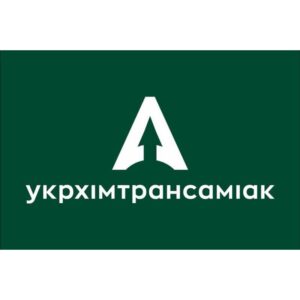
On 1 December, Ukrkhimtransammonia (Kyiv) announced a tender for liability insurance for business entities that use high-risk facilities, covering damage that may be caused as a result of emergencies.
According to the Prozorro electronic procurement system, the expected price in the tender is UAH 497,600.
The deadline for submitting applications is 9 December.

The first state-certified lobbyists have appeared in Ukraine. As of the end of November, 110 participants had been entered into the relevant Register, which is maintained by the National Agency for Corruption Prevention (NAZK), three months after the Law on Lobbying came into force. Among them are 55 companies, 54 individuals, and one foreign representative office. OpenDataBot analysed the purpose of such a Register and how it will affect business and the state.
The newly created NACP Transparency Register, also known as the lobbyist register, has 108 active participants. The list includes businesses, public organisations and ordinary citizens.
We are tracking changes on the Transparency Register (lobbyists) page on OpenDataBot.
You can find out about the first lobbyists in Ukraine on the Open Data Bot Lobbyist Register page. At the same time, if a company is a registered lobbyist, the corresponding marks will be added to the company’s card on its page in Open Data Bot.
In total, 110 participants have been registered since the Register began operating, but two subsequently suspended their participation. These include 55 companies, 54 individuals and one foreign representative office. Among them are businesses such as Philip Morris Ukraine, the Aurora chain of stores, Metro Cash & Carry Ukraine, ArcelorMittal Kryvyi Rih and Oschadbank, which are included in the Open Data Bot Index 2025.
The leader of this year’s Open Data Bot Index in the banking sector, Oschadbank, was one of the first financial institutions to join the Register. The company explains:
“For a bank whose activities are directly dependent on regulatory control, it is important to interact openly and legitimately with the National Bank and other state bodies. Registration in the Transparency Register allows us to operate within the legal framework, distinguishing between legitimate protection of interests and unacceptable forms of influence.”
Inna Boichuk, Director of Corporate Affairs at Aurora, one of the retail leaders in the Open Data Bot Index 2025, notes that the Law on Lobbying and the Register itself are only tools. In order for this mechanism to work and be truly effective in terms of ensuring transparency of influence on decision-making, it is necessary to work systematically to build trust around the newly created lobbying institution.
“This work should involve government stakeholders, business, the media and society as a whole. In particular, business should openly represent its positions, and the authorities should perceive and accept such interaction as a natural part of the democratic decision-making process. Therefore, at this stage, it would be fair to say that the aforementioned law and the Transparency Register are steps towards the formation of a mature culture of influence on the authorities,” comments Inna Boichuk.
Viktoria Kulikova, Head of the Committees Department at the European Business Association, also mentions the technical nuances during the process of establishing the system.
“We expect the Register to become a truly effective tool for transparent communication. At the same time, it is important to improve the legislation: clarify the definitions of concepts, simplify reporting, and provide practical incentives to registered participants. Only then will the system work effectively and promote accountability on all sides. In particular, the current reporting format is quite technically complex for large business associations that have many lobbying issues (regulatory acts to which the Association submits proposals), hundreds of lobbying beneficiaries (member companies) and a great deal of communication with lobbying targets (representatives of state bodies), information about which we will need to enter into the transparency register,” comments Victoria.
A similar opinion is held by the Union of Ukrainian Entrepreneurs, whose team participated in testing the Register before its launch and shared recommendations for improving interaction.
“For the system to work properly, it is important that there is two-way transparency: not only should businesses register and report, but MPs and government officials should also act transparently, honestly and comply with the law. And for the Register to work effectively, improvements to the legislation are needed, in particular clarification of terms, optimisation of reporting requirements and the establishment of additional incentives for registered lobbyists.”
The SUP notes that the main stage of interaction between newly created lobbyists and the state will begin in January 2026, when the first lobbying report will be submitted. It will be then that it will be possible to fully assess the work of the Register — its workload, functionality and ease of use.
OpenDataBot will track updates to the Lobbyist Register. Now, when checking companies or individuals in OpenDataBot services, users will see a mark indicating registration in the Register. This is another step towards transparency in the business environment and accountability of those who influence political decisions.
https://opendatabot.ua/analytics/lobbyists
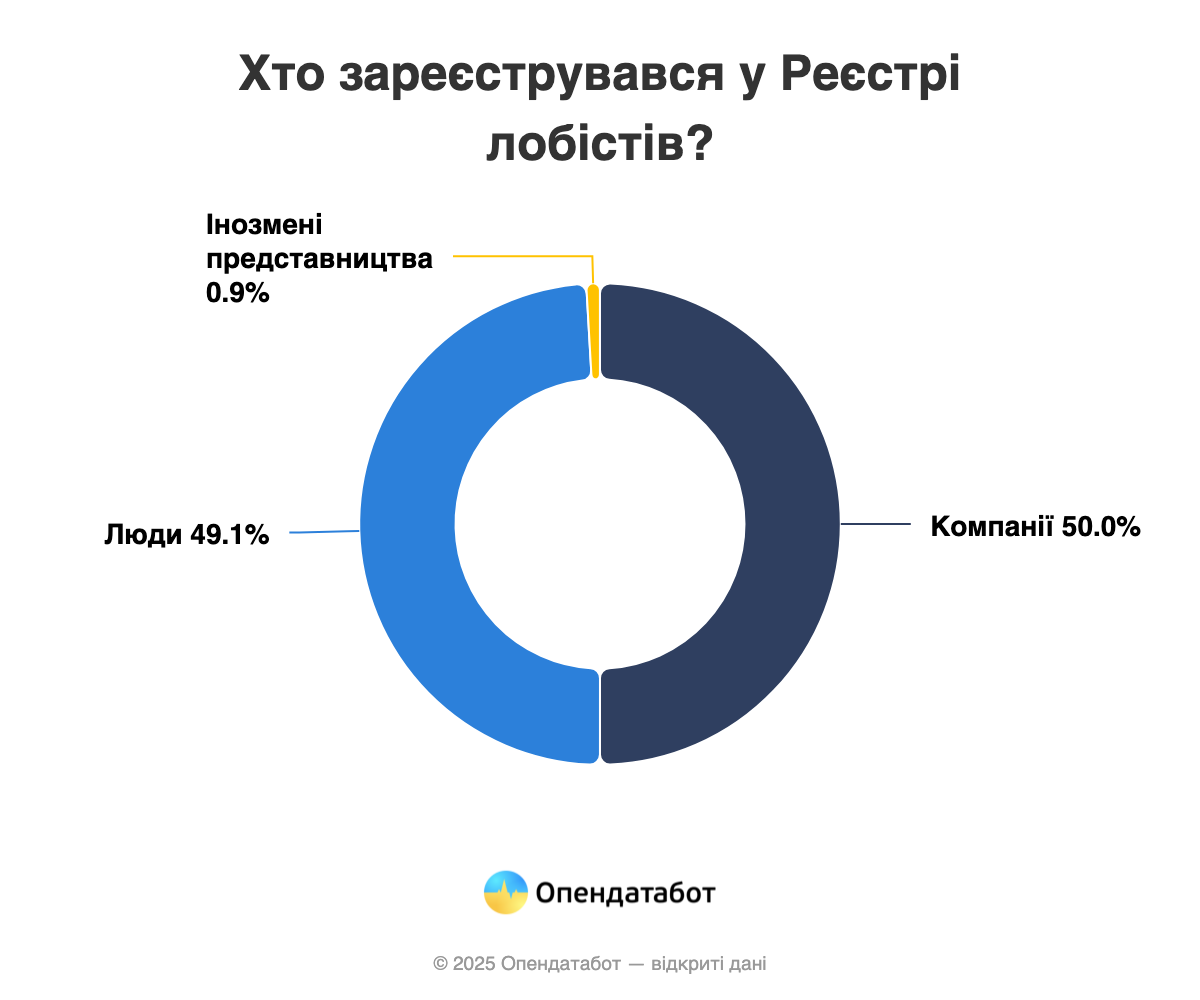
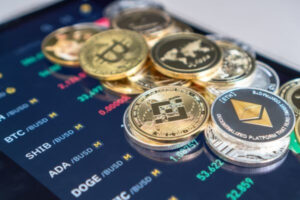
The most vivid list of the “worst” is compiled by Pintu News – “10 Altcoins that Crashed During the Month of November 2025.” According to the publication, a number of tokens lost between 58% and more than 97% of their value in 30 days (as of November 23).
Top 10 declines in November 2025 according to Pintu
1. LooksRare (LOOKS) – NFT marketplace
– approximately −79% over the month
– decline in NFT trading volumes (down 41% since Q3 according to Cryptoslam), 30% decline in staking, and liquidity outflow.
2. Fwog (FWOG) – Solana meme token
– approximately −69% in 30 days
– profit-taking by large holders after a previous sharp rally, high volatility.
3. Perpetual Protocol (PERP) – DeFi derivatives
– approximately −67%
– a drop in DeFi derivatives trading volume by more than 28%, a decrease in open interest by approximately 35%, competition with dYdX and GMX.
4. Clearpool (CPOOL) – on-chain lending for institutions
– approximately −61%
– decline in demand for uncollateralized loans, increase in credit risks, and outflow of liquidity from pools by almost 45%.
5. Synthetix (SNX) – synthetic assets and perpetuals
– −60% over the month
– a reduction in trading activity on Synthetix Perps by almost 38%, a 27% drop in protocol revenue, and the exit of market makers.
6. Story Protocol (IP) – intellectual property tokenization
– approximately −58.5%
– cooling hype around Web3-IP, a drop in content token issuance activity by approximately 50%.
7. Metaplex (MPLX) – NFT infrastructure on Solana
– approximately −58%
– a drop in NFT volumes on Solana by approximately 32%, controversial tokenomics, and discussions about fees increased pressure on the token.
8. Jito (JTO) – liquid staking on Solana
– approximately −58%
– decline in staking yields (from ~8.1% to ~6.4% per annum), increased competition from other LST protocols.
9. Drift (DRIFT) – derivative DEX on Solana
– approximately −57%
– reduction in derivatives volumes on Solana by approximately 35%, liquidation of leveraged positions.
10. Pixelverse (PIXFI) – Web3 game
– approximately −97% over the month
– a collapse in in-game transactions by more than 90% and the failure to update the roadmap effectively destroyed the project’s capitalization.
Pintu’s overall conclusion: the vast majority of altcoins lost more than 50% in 30 days in November, and the risks in the low-liquidity and micro-cap project segment have increased sharply.
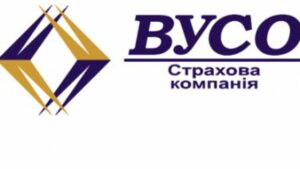
The National Technical University of Ukraine ‘Igor Sikorsky Kyiv Polytechnic Institute’ has announced its intention to conclude an agreement with VUSO Insurance Company for the purchase of compulsory civil liability insurance for owners of land vehicles (OSAGO).
According to a report in the Prozorro electronic public procurement system, the company’s price offer was UAH 92,300, with an expected cost of UAH 274,100.
The following insurance companies participated in the tender: Guardian – UAH 122,800, TAS – UAH 153,800, NASK Oranta – UAH 153,800, and Kraina – UAH 154,100.
VUSO Insurance Company was founded in 2001. It is a member of the Motor Transport Insurance Bureau of Ukraine and the National Association of Insurers, a participant in the agreement on direct settlement of losses, and a member of the Nuclear Insurance Pool.